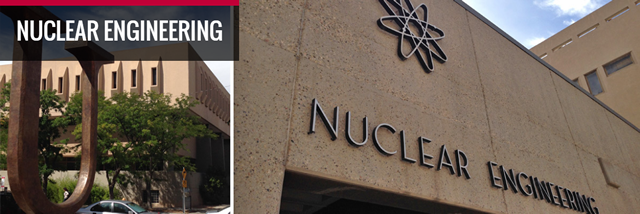
Nuclear Engineering ETDs
Publication Date
2-1-2012
Abstract
There are several machines in this country that produce short bursts of neutrons for various applications. A few examples are the Z-machine, operated by Sandia National Laboratories in Albuquerque, NM; the OMEGA Laser Facility at the University of Rochester in Rochester, NY; and the National Ignition Facility (NIF) operated by the Department of Energy at Lawrence Livermore National Laboratory in Livermore, California. They all incorporate neutron time of flight (nTOF) detectors which measure neutron yield, and the shapes of the waveforms from these detectors contain germane information about the plasma conditions that produce the neutrons. However, the signals can also be clouded' by a certain fraction of neutrons that scatter off structural components and also arrive at the detectors, thereby making analysis of the plasma conditions more difficult. These detectors operate in current mode — i.e., they have no discrimination, and all the photomultiplier anode charges are integrated rather than counted individually as they are in single event counting. Up to now, there has not been a method for modeling an nTOF detector operating in current mode. MCNP-PoliMi** was developed in 2002 to simulate neutron and gamma-ray detection in a plastic scintillator, which produces a collision data output table about each neutron and photon interaction occurring within the scintillator; however, the post-processing code which accompanies MCNP-PoliMi assumes a detector operating in single-event counting mode and not current mode. Therefore, the idea for this work had been born: could a new post-processing code be written to simulate an nTOF detector operating in current mode? And if so, could this process be used to address such issues as the impact of neutron scattering on the primary signal? Also, could it possibly even identify sources of scattering (i.e., structural materials) that could be removed or modified to produce 'cleaner' neutron signals? This process was first developed and then applied to the axial neutron time of flight detectors at the Z-Facility mentioned above. First, MCNP-PoliMi was used to model relevant portions of the facility between the source and the detector locations. To obtain useful statistics, variance reduction was utilized. Then, the resulting collision output table produced by MCNP-PoliMi was further analyzed by a MATLAB post-processing code. This converted the energy deposited by neutron and photon interactions in the plastic scintillator (i.e., nTOF detector) into light output, in units of MeVee\u0444 (electron equivalent) vs time. The time response of the detector was then folded into the signal via another MATLAB code. The simulated response was then compared with experimental data and shown to be in good agreement. To address the issue of neutron scattering, an 'Ideal Case,' (i.e., a plastic scintillator) was placed at the same distance from the source for each detector location with no structural components in the problem. This was done to produce as 'pure' a neutron signal as possible. The simulated waveform from this 'Ideal Case' was then compared with the simulated data from the 'Full Scale' geometry (i.e., the detector at the same location, but with all the structural materials now included). The 'Ideal Case' was subtracted from the 'Full Scale' geometry case, and this was determined to be the contribution due to scattering. The time response was deconvolved out of the empirical data, and the contribution due to scattering was then subtracted out of it. A transformation was then made from dN/dt to dN/dE to obtain neutron spectra at two different detector locations. Matzen, K., Phys. Plasmas 4, 1519 (1997). T.R. Boehly, D.L. Brown, R.S. Craxton, R.L. Keck, J.P. Knauer, J.H. Kelly, T.J. Kessler, S.A. Kumpan, S.J. Loucks, S.A. Letzring, F.J. Marshall, R.L. McCrory, S.F.B. Mose, W. Seka, J.M. Soures, and C.P. Verdon, 'Initial performance results of the OMEGA laser system,' Opt. Commun., vol. 133, pp. 495-506, 1997. E.I. Moses, 'The National Ignition Facility: Status and plans for the experimental program,' Fusion Sci. Technol., vol 44, pp. 11-18, 2003. **S.A. Pozzi, E. Padovani, M. Marsequerra, Nucl. Instr. and Meth. A 513 (2003) 550-558. MeVee = amount of light produced by 1 MeV deposited by a Compton scattered electron.
Sponsors
Sandia National Laboratories
Document Type
Dissertation
Language
English
Degree Name
Nuclear Engineering
Level of Degree
Doctoral
Department Name
Nuclear Engineering
First Committee Member (Chair)
Ruiz, Carlos
Second Committee Member
Prinja, Anil
Third Committee Member
Gilmore, Mark
Recommended Citation
Nelson, Alan. "A novel method for modeling the neutron Time of Flight (nTOF) detector response in current mode to inertial confinement fusion experiments." (2012). https://digitalrepository.unm.edu/ne_etds/16


